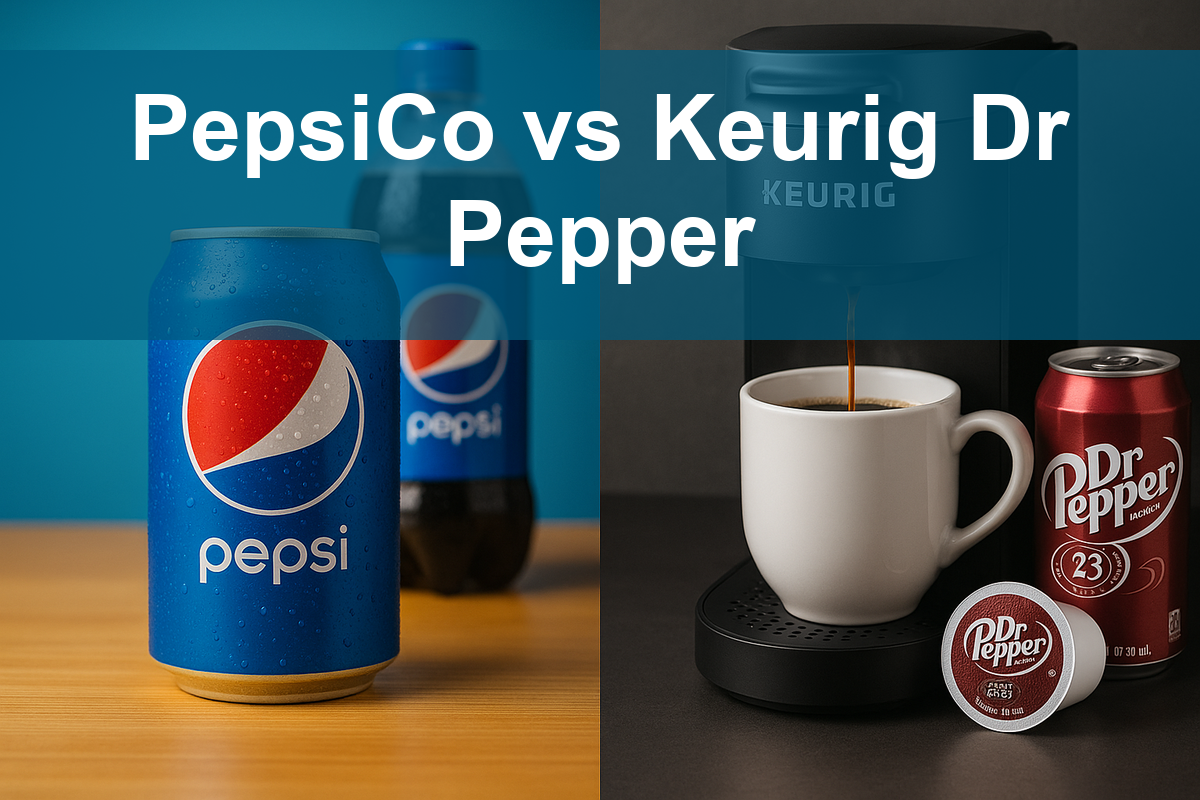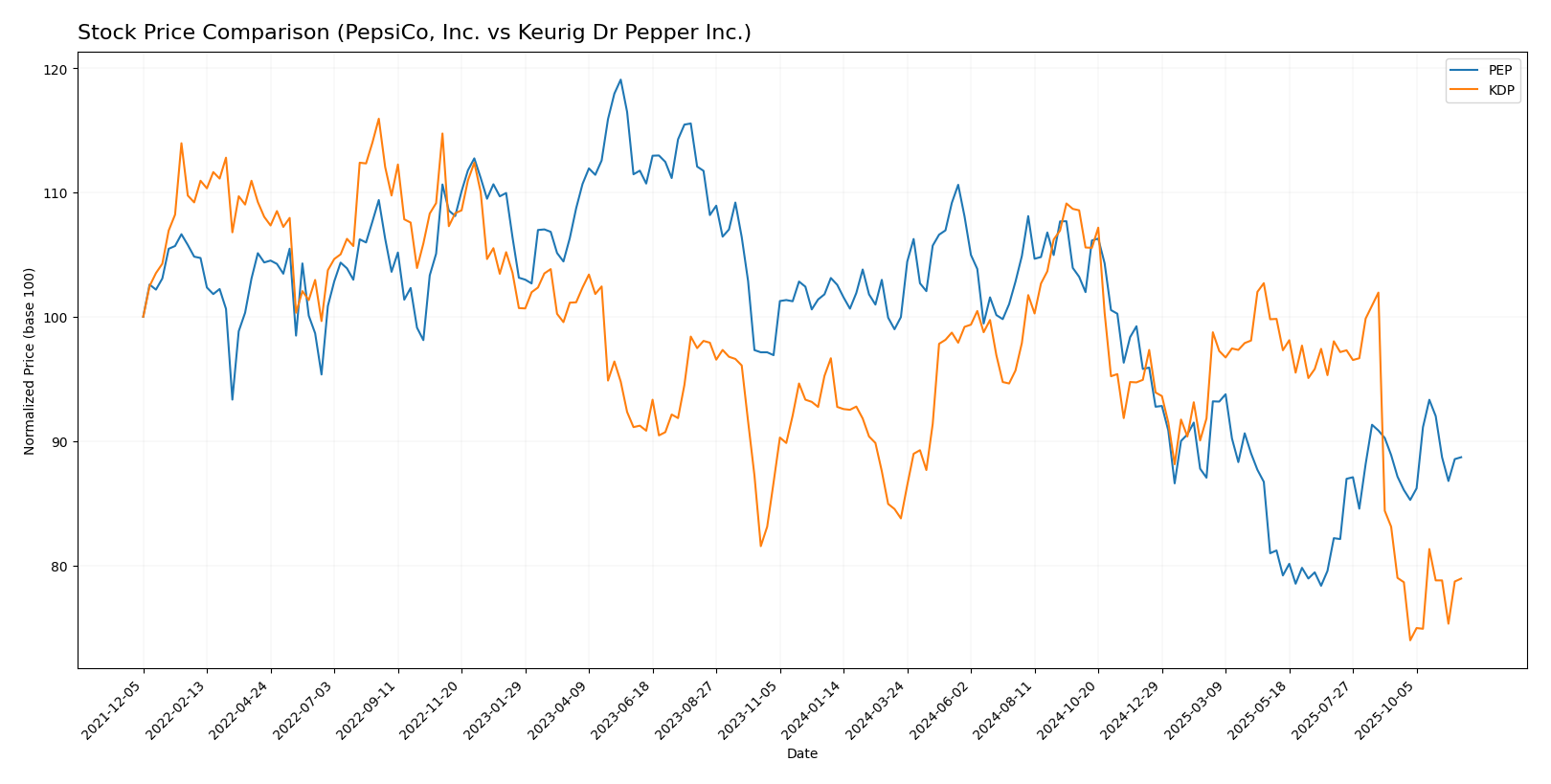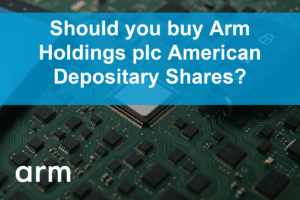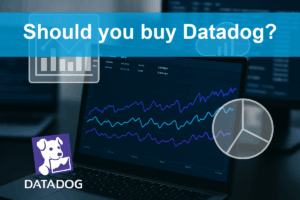In the competitive landscape of the non-alcoholic beverage industry, PepsiCo, Inc. (PEP) and Keurig Dr Pepper Inc. (KDP) stand out as two major players, each with unique strengths and strategies. While both companies overlap in their market segments, they differentiate themselves through innovation and product offerings. In this article, I will analyze these two companies to determine which one presents a more compelling opportunity for investors. Let’s dive into the details and see which stock might be the best addition to your portfolio.

Table of contents
Company Overview
PepsiCo, Inc. Overview
PepsiCo, Inc. is a global leader in the food and beverage industry, committed to offering a diverse range of products that cater to the tastes and preferences of consumers worldwide. Founded in 1898 and headquartered in Purchase, New York, PepsiCo operates through multiple segments including Frito-Lay, Quaker Foods, and its beverage divisions. The company is renowned for its snacks, beverages, and convenient food products, serving various distribution channels from grocery stores to e-commerce platforms. With a market cap of approximately $200B, PepsiCo maintains a strong position in the non-alcoholic beverage sector, focusing on sustainable growth and innovation.
Keurig Dr Pepper Inc. Overview
Keurig Dr Pepper Inc., headquartered in Burlington, Massachusetts, is a prominent player in the beverage industry, best known for its innovative coffee systems and a wide array of beverage brands. Established in 1981, the company has significantly expanded its portfolio to include popular names like Dr Pepper, Canada Dry, and Snapple. With a market capitalization of around $37B, its business model emphasizes both coffee systems and packaged beverages, distributing products through retail partners and direct-to-consumer channels. The company is dedicated to enhancing coffee experiences and diversifying its beverage offerings to meet changing consumer preferences.
Key Similarities and Differences
Both PepsiCo and Keurig Dr Pepper operate in the non-alcoholic beverage sector and share a commitment to innovation and consumer satisfaction. However, their business models differ significantly; PepsiCo emphasizes a broader range of snacks and food products alongside beverages, while Keurig Dr Pepper focuses primarily on coffee systems and branded packaged beverages. This distinction highlights PepsiCo’s extensive diversification compared to Keurig’s concentrated approach.
Income Statement Comparison
The following table compares the income statements of PepsiCo, Inc. (PEP) and Keurig Dr Pepper Inc. (KDP) for the most recent fiscal year, showcasing key financial metrics.
| Metric | PepsiCo (PEP) | Keurig Dr Pepper (KDP) |
|---|---|---|
| Revenue | 91.85B | 15.35B |
| EBITDA | 16.68B | 3.38B |
| EBIT | 12.87B | 2.65B |
| Net Income | 9.58B | 1.44B |
| EPS | 6.98 | 1.06 |
Interpretation of Income Statement
In the latest fiscal year, PepsiCo reported a revenue of 91.85B, marking a slight increase from 91.47B in the previous year, while Keurig Dr Pepper saw revenue grow from 14.81B to 15.35B. PepsiCo’s net income rose to 9.58B, reflecting improved margins, whereas KDP’s net income also increased to 1.44B. Both companies show stability in their operating margins, but PepsiCo’s larger scale allows for more substantial absolute figures. Notably, growth rates for both companies indicate a healthy trend, with PepsiCo maintaining effective cost management despite inflationary pressures.
Financial Ratios Comparison
The following table presents the most recent financial ratios for PepsiCo, Inc. (PEP) and Keurig Dr Pepper Inc. (KDP), allowing for a clear comparison between the two companies.
| Metric | [Company A: PEP] | [Company B: KDP] |
|---|---|---|
| ROE | 53.09% | 5.94% |
| ROIC | 13.73% | 4.04% |
| P/E | 21.80 | 30.36 |
| P/B | 11.57 | 1.80 |
| Current Ratio | 0.82 | 0.49 |
| Quick Ratio | 0.65 | 0.33 |
| D/E | 2.49 | 0.71 |
| Debt-to-Assets | 0.45 | 0.32 |
| Interest Coverage | 14.02 | 3.79 |
| Asset Turnover | 0.92 | 0.29 |
| Fixed Asset Turnover | 2.93 | 3.99 |
| Payout Ratio | 75.48% | 82.86% |
| Dividend Yield | 3.46% | 2.73% |
Interpretation of Financial Ratios
PepsiCo exhibits significantly higher returns on equity (ROE) and invested capital (ROIC) compared to Keurig Dr Pepper, indicating more effective use of shareholder funds. However, KDP’s lower price-to-book (P/B) ratio suggests it may be undervalued. The current and quick ratios indicate that PepsiCo is in a better liquidity position, while KDP has a higher debt-to-equity (D/E) ratio, which raises concerns regarding financial leverage. Overall, PepsiCo appears to be a stronger investment choice with better profitability metrics and lower financial risk.
Dividend and Shareholder Returns
PepsiCo, Inc. (PEP) continues to reward shareholders with a solid dividend of $5.27 per share, yielding 3.46%. The payout ratio stands at 75.48%, suggesting a sustainable distribution, albeit with risks if profits decline. On the other hand, Keurig Dr Pepper Inc. (KDP) does not pay dividends, reflecting its growth strategy and reinvestment focus, although it engages in share buybacks. This approach suggests a commitment to long-term value creation, albeit with inherent risks.
Strategic Positioning
PepsiCo, Inc. (PEP) holds a commanding market share in the non-alcoholic beverage sector, significantly outpacing Keurig Dr Pepper Inc. (KDP). With a market cap of approximately $200B compared to KDP’s $37B, PepsiCo’s diverse product range and robust distribution channels afford it a competitive edge. However, KDP’s focus on innovative coffee solutions and flavored beverages presents constant pressure. Both companies face technological disruptions, necessitating adaptation to consumer preferences and sustainability trends.
Stock Comparison
In this analysis, I will examine the stock price movements and trading dynamics of PepsiCo, Inc. (PEP) and Keurig Dr Pepper Inc. (KDP) over the past year, highlighting significant fluctuations and their implications for investors.

Trend Analysis
PepsiCo, Inc. (PEP) has experienced a notable decline of -13.98% over the past year, indicating a bearish trend characterized by acceleration. The stock reached a high of 182.19 and a low of 129.07, with a standard deviation of 14.75, which suggests increased volatility. Recently, over the last 11 weeks, the price change has been a minimal -0.2%, with a standard deviation of 3.95 and a slight upward trend slope of 0.3.
Keurig Dr Pepper Inc. (KDP) also reflects a bearish trend with a significant decrease of -18.34% over the past year, though this trend is marked by deceleration. The stock’s highest price was 37.61 and the lowest 25.5, with a standard deviation of 2.75. In the recent 11-week period, KDP’s stock has seen a decline of -5.03% and a standard deviation of 0.91, with a trend slope of -0.04, indicating a slight downward momentum.
In summary, both stocks are currently in a bearish trend, with PEP showing signs of acceleration in its decline while KDP’s losses are decelerating. Investors should remain cautious and consider these trends when making investment decisions.
Analyst Opinions
Recent analyst recommendations indicate a mixed outlook for key stocks. For PepsiCo, Inc. (PEP), analysts maintain a rating of B+, emphasizing strong return metrics and solid cash flow, suggesting a buy consensus. In contrast, Keurig Dr Pepper Inc. (KDP) holds a B rating, with analysts pointing to moderate growth potential and acceptable performance metrics, leading to a hold recommendation. Overall, the consensus leans towards buy for PEP while KDP remains a hold for cautious investors.
Stock Grades
Recent stock ratings provide valuable insights into how analysts view PepsiCo, Inc. (PEP) and Keurig Dr Pepper Inc. (KDP). Below are the latest grades from recognized grading companies.
PepsiCo, Inc. Grades
| Grading Company | Action | New Grade | Date |
|---|---|---|---|
| Freedom Capital Markets | downgrade | Hold | 2025-10-23 |
| Wells Fargo | maintain | Equal Weight | 2025-10-10 |
| JP Morgan | maintain | Neutral | 2025-10-06 |
| Barclays | maintain | Equal Weight | 2025-10-03 |
| Citigroup | maintain | Buy | 2025-09-25 |
| Wells Fargo | maintain | Equal Weight | 2025-09-25 |
| UBS | maintain | Buy | 2025-09-11 |
| RBC Capital | maintain | Sector Perform | 2025-09-03 |
| Barclays | maintain | Equal Weight | 2025-07-21 |
| Citigroup | maintain | Buy | 2025-07-18 |
Keurig Dr Pepper Inc. Grades
| Grading Company | Action | New Grade | Date |
|---|---|---|---|
| Wells Fargo | maintain | Overweight | 2025-10-28 |
| Barclays | maintain | Equal Weight | 2025-10-28 |
| JP Morgan | maintain | Overweight | 2025-10-20 |
| B of A Securities | maintain | Buy | 2025-10-08 |
| Goldman Sachs | maintain | Neutral | 2025-10-02 |
| Wells Fargo | maintain | Overweight | 2025-09-25 |
| Barclays | downgrade | Equal Weight | 2025-09-24 |
| BNP Paribas | downgrade | Underperform | 2025-09-22 |
| Piper Sandler | maintain | Overweight | 2025-09-17 |
| Citigroup | maintain | Buy | 2025-09-16 |
Overall, the trend for PepsiCo shows a recent downgrade to “Hold,” indicating a more cautious outlook, while Keurig Dr Pepper maintains strong ratings with several “Overweight” recommendations, suggesting confidence in its performance. Investors should consider these grades when making portfolio decisions.
Target Prices
The consensus target prices from analysts indicate strong expectations for both PepsiCo, Inc. (PEP) and Keurig Dr Pepper Inc. (KDP).
| Company | Target High | Target Low | Consensus |
|---|---|---|---|
| PepsiCo, Inc. (PEP) | 164 | 140 | 150.5 |
| Keurig Dr Pepper Inc. (KDP) | 41 | 24 | 32.5 |
For PepsiCo, the consensus target price of 150.5 is moderately above its current price of 146.1, suggesting potential upside. In contrast, Keurig Dr Pepper’s target consensus of 32.5 is significantly above its current price of 27.21, indicating a positive outlook from analysts.
Strengths and Weaknesses
The following table outlines the strengths and weaknesses of PepsiCo, Inc. (PEP) and Keurig Dr Pepper Inc. (KDP) based on the most recent data.
| Criterion | PepsiCo, Inc. (PEP) | Keurig Dr Pepper Inc. (KDP) |
|---|---|---|
| Diversification | Strong portfolio across beverages and snacks | Focused on beverages only |
| Profitability | Net profit margin: 10.43% | Net profit margin: 14.72% |
| Innovation | High investment in R&D | Growing product lines with new flavors |
| Global presence | Operates in over 200 countries | Mainly North America focused |
| Market Share | Leading market share in soft drinks | Significant share in coffee and flavored drinks |
| Debt level | Debt-to-equity ratio: 2.49 | Debt-to-equity ratio: 0.71 |
Key takeaways indicate that while PepsiCo boasts a diverse product range and a strong global presence, Keurig Dr Pepper shows superior profitability and a lower debt level, making it an attractive option for risk-averse investors.
Risk Analysis
In the table below, I outline the key risks associated with PepsiCo (PEP) and Keurig Dr Pepper (KDP).
| Metric | PepsiCo, Inc. (PEP) | Keurig Dr Pepper Inc. (KDP) |
|---|---|---|
| Market Risk | Moderate | Moderate |
| Regulatory Risk | High | Moderate |
| Operational Risk | Moderate | High |
| Environmental Risk | High | Moderate |
| Geopolitical Risk | Moderate | Low |
Both companies face notable risks, with regulatory and environmental factors having significant potential impacts. PepsiCo’s high regulatory risk stems from stringent food and beverage regulations, while operational challenges are particularly pronounced for Keurig Dr Pepper, given its reliance on supply chain and production efficiency.
Which one to choose?
In comparing PepsiCo, Inc. (PEP) and Keurig Dr Pepper Inc. (KDP), PepsiCo emerges as a stronger candidate for investors seeking stability and growth. PepsiCo boasts a higher gross profit margin of 54.5% compared to KDP’s 55.6%, yet its net profit margin of 10.4% indicates a robust bottom line, giving it an edge in profitability metrics. The price-to-earnings (P/E) ratio of PEP is 21.8, while KDP’s is significantly higher at 30.4, suggesting that PEP may be more attractively valued.
While both companies have faced bearish trends recently, PEP offers a better return on equity (53.1%) compared to KDP (5.9%). Analysts have rated PEP at B+ versus KDP’s B, reflecting more favorable long-term prospects for PepsiCo.
Recommendation: Investors focused on consistent dividends and stronger fundamentals may prefer PepsiCo, while those seeking higher growth potential might consider KDP. However, both companies face risks related to competition and market dependence.
Disclaimer: This article is not financial advice. Each investor is responsible for their own investment decisions.
Go further
I encourage you to read the complete analyses of PepsiCo, Inc. and Keurig Dr Pepper Inc. to enhance your investment decisions:



